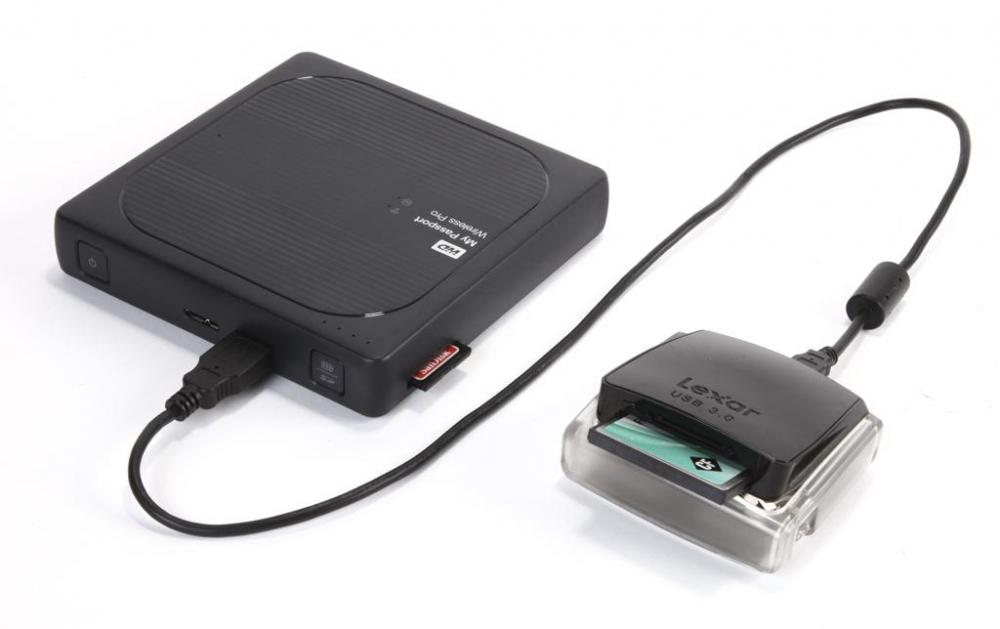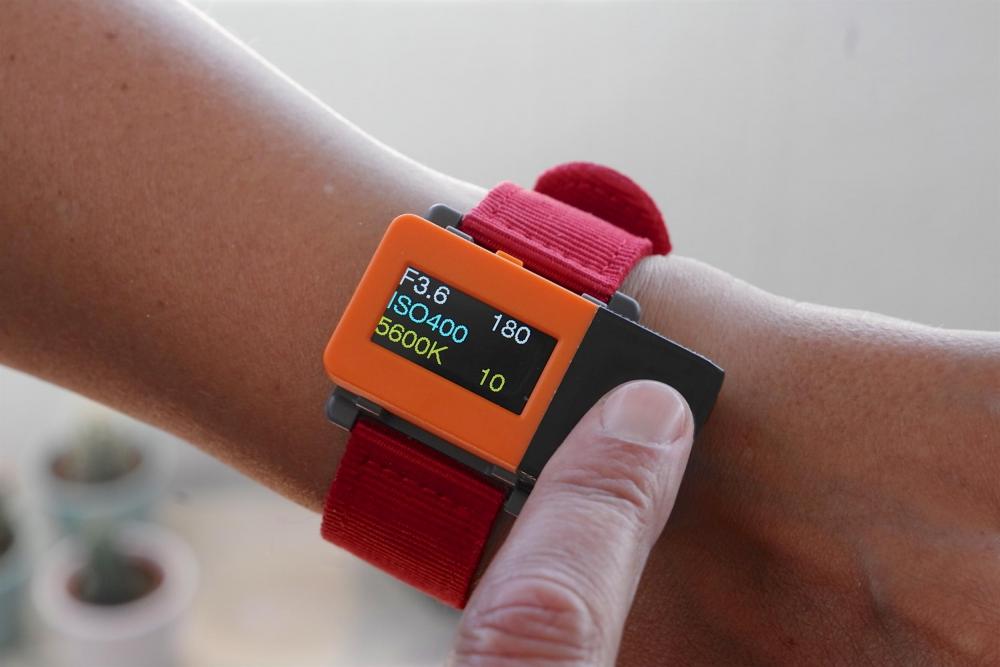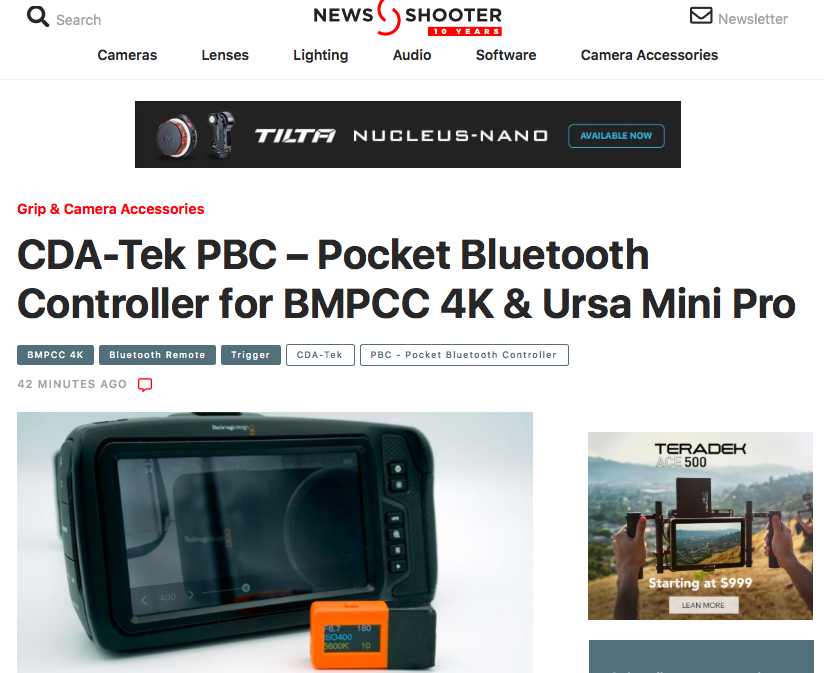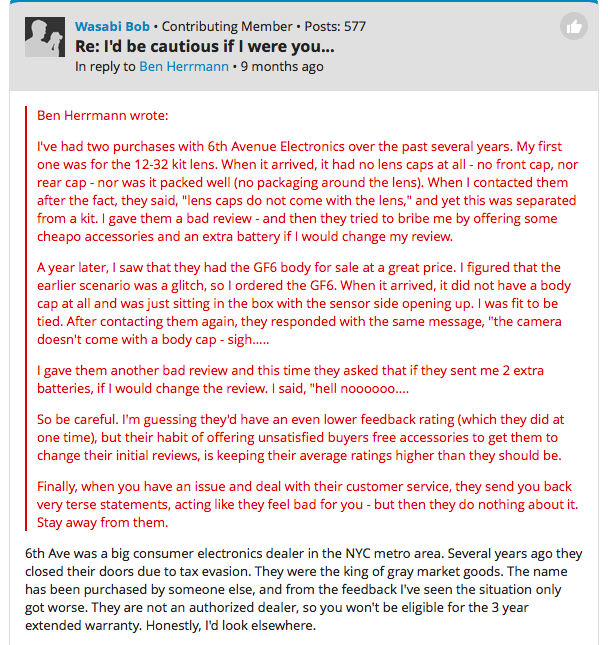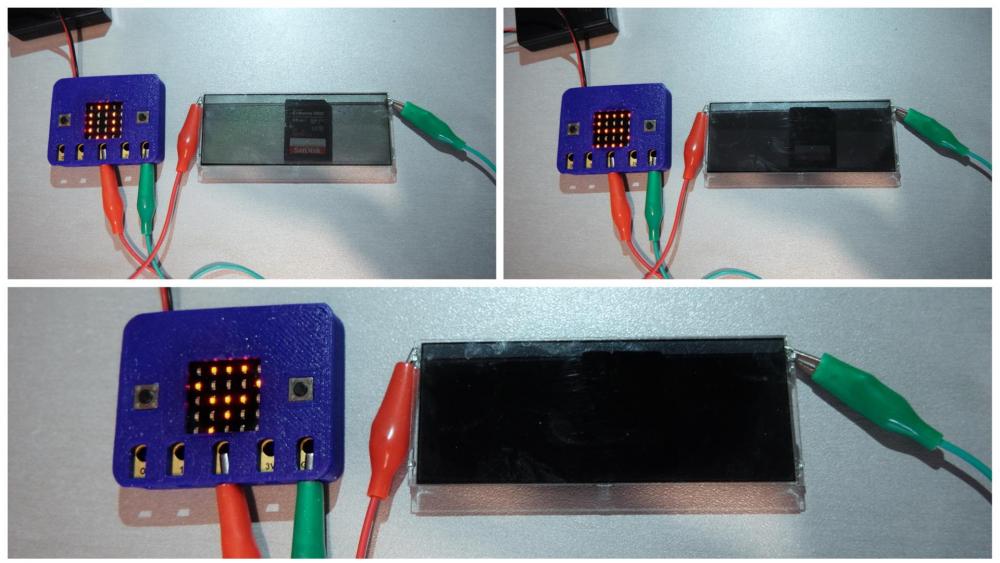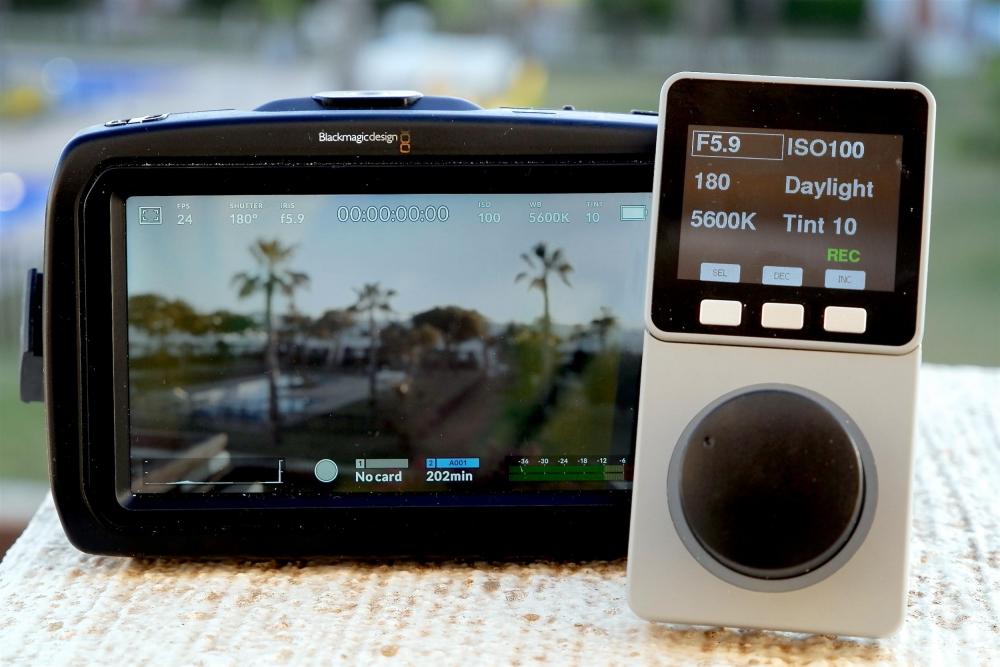-
Posts
6,085 -
Joined
-
Last visited
Content Type
Profiles
Forums
Articles
Everything posted by BTM_Pix
-

Find the best video quality for under $200 - fun challenge
BTM_Pix replied to Andrew - EOSHD's topic in Cameras
WEX have a raft of used Nikon D200 and D3000 bodies for under £70. As the last hurrah of the CCD in Nikon'd DSLR's I'd say they are an interesting proposition for something cheap but different. I'm in London next week and I might well pick one up. https://www.wexphotovideo.com/used/#esp_category_cf=Model&esp_category_filter_Manufacturer=Nikon&esp_category_filter_Model=D3000&esp_category_filter_Model=D200 I'd absolutely clean up in that category if it was the other way round ! -
Sorry for the OT about Bruno.... With regard to batteries, I haven't really got many horror stories about any 3rd party batteries but I'm surprised there have been issues with Wasabi as I've had good luck with them on multiple different camera types. If you are looking for a compromise between original batteries and unbranded then I'd have a look at Duracell of all people. When the D500 was released and could only use original Nikon batteries, I bought a couple of the Duracell versions as I'd read a report that said they were compatible and they have been absolutely flawless. I've since bought them for X-T2 and again they've been perfect so, for me, they offer a solid brand version of the originals at a reduced price.
-

Find the best video quality for under $200 - fun challenge
BTM_Pix replied to Andrew - EOSHD's topic in Cameras
By the way, one slight drawback here is the price variation in different markets. Most notably in Sweden where some of the prices I've seen him get gear for means that @Mattias Burling might well end up shooting his $150 entry on an Alexa -

Find the best video quality for under $200 - fun challenge
BTM_Pix replied to Andrew - EOSHD's topic in Cameras
Love this idea. And when we've completed that one..... I'd thought about something similar when people were getting nostalgic for the GH2 but more in the way of a "chain camera" if you like. We have a GH2 with one lens (kit zoom would be fine) and a vari ND and a mic. First person has 24 hours to shoot something with it then posts it to the next person who has 24 hours and then sends it on etc. Make a common theme such as "where I live" and limit it to 2 mins finished pieces each and we'd end up with a very interesting worldwide glimpse into the EOSHD community. -
Tomato/Tomato to some degree but as he has stated it was a deliberate "artistic choice" for it to look like that then it was the technical choices that had to serve the aesthetic rather than than the aesthetic being a by-product of the technical choices. I learnt this lesson the hard way when failing to achieve a Kraftwerk aesthetic on my last album by using a mandolin and a French horn. Well, as I say, he's impressed quite a lot of people with that choice judging by the comments, many of whom find it to be very evocative for them of the work of Philip Bloom. I'm not really au fait enough with the entire canon of Bloom's work to know whether he ever had a Handycam period so I don't have sufficient insight to challenge that.
-
The real time depth detection, tracking and object recognition demos I've seen with this of live video (HDMI>CSI converters) can form the basis of an AF system that I think will be integrated within a commercial product within 18 months. Obviously It won't be this specific SBC as its just a consumer development/tinkering board (although it does itself have the potential to be the basis for an outboard system) but the principle will be the same. How is that for a bold prediction
-
Interesting response from the creator to the negative comments about the highlights. Its not an artistic choice that I would have made but there are enough very positive responses to it from commenters on YouTube to suggest many others thought it was the right one. Interesting.
-
It will be here much sooner than we expect. This is a video of an Nvidia Jetson Nano SBC doing various real time image processing including tracking, mapping and even stabilisation. The Jetson Nano is $99....
-
One option would be package it within an iOS and Android apps. There are a large number of services that offer template based creation tools that would be suitable to build a similar structure to a DVD. The advantage to doing it this way would be that it is secure in terms of piracy (of the sort that the average consumer would get up to at least), has no reproduction cost in terms of time or materials aside from the initial master, is easy to manage financially as all the transactions are done through the app stores and is more convenient for the customer as it is done directly onto their device rather than through the mail etc. Consuming media on a phone/device is not the hurdle it once was in terms of acceptance but even so most people are now able to cast the output one way or another on to a TV if they still want a big screen shared experience. Another alternative would be to pick up a used older Mac to dedicate to DVD Studio Pro if you still wanted to stick with physical media. Or even use something like Parallels to let you run an instance of an older version of OSX on your current Mac.
-
Just an update on this.. The reality was a whole lot different. Incredibly slow auto import from from SD card, erratic behaviour in terms of it not always copying all files from the card and really slow wireless even on 5.8Ghz. Nice blue LED on it though.
-
Ah OK, I thought you meant the camera. A lock mode on the unit is easy enough to implement.
-
I haven't commented on this as I wanted to give it time to pan out but I had a search on YouTube for "Sony vs Fujifilm colour" and no other video creators have found it necessary to manipulate the thumbnail in this way to "get around the algorithm" and all of them seem to have done OK in terms of the number of views. I get trying to game the system @MaxYuryev if you feel you've been hard done by but do you not think by doing something so deliberately disingenuous as this you've now become part of the problem rather than the solution? What I'm really struggling to understand though is why it remains uncorrected this long after it has been pointed out and this long after you've admitted the deliberate deception. I'm afraid you can't hide behind the algorithm for that one and for what its worth, from my own personal point of view, whatever benefit of the doubt I'd given you for an aberration born of a sense of injustice and you at least having the honesty to admit to it, has evaporated by you not remedying it when you've had the opportunity.
-
You mean you don't like the very stylish red strapped version of this one ? The AppleWatch is something I've considered (as well as the Android equivalents when I made the app) but, in all honesty, my conclusion was that its overkill for this task in terms of complexity and certainly in terms of cost. The advantage with this (apart from it only being €60) is that you can attach it to a tripod or gimbal far easier than a watch and the expansion port offers us more possibility to extend what it can control. It'll make more sense when you see one of the expansion units. You mean you would like to lock out controls from being able to be operated from the camera itself ?
-
If I ever visit you, I'll have to remind myself not to take up any offer of a home made cupcake.
-
Some more information and pictures regarding the PBC in the NewsShooter feature here : https://www.newsshooter.com/2019/06/22/cda-tek-pbc-pocket-bluetooth-controller-for-bmpcc-4k-ursa-mini-pro/
-
The rolling shutter problems for electronic shutter for stills are discussed at this starting point that I've linked in the DPReview video (I don't know what shutter speed is being used though) but if you play on to the video section then @Jordan Drake confirms its there in video but obviously nowhere near as bad as it is in stills and has included a short moving sample. I have to say that in other videos I've seen the warping from the IBIS was far more disconcerting (as it was to me on the XH-1) but all of this stuff is situational so I'd reserve judgement until I've had experience of it myself and its also worth bearing in mind that all of the samples seen thus far have been with pre-production firmware.
-
Presuming a 30 day campaign, I would expect it to be shipping within 4-5 weeks of the conclusion.
-
Judging by some of the promotions and discounts I'm seeing on their latest full frame digital releases we're not far off the same thing happening with Canon, Nikon and Panasonic this summer
-
Yes it will be on Kickstarter. I understand the apprehension about Kickstarter to be honest but rest assured nothing of mine will ever be going on there until it is ready to go from a functionality point of view, which both this and the small one already more or less are. The problems with Kickstarter invariably happen when it is being used to fund development rather than just funding production. I'll put up a small video when time allows next week to show both of them in operation. The small one has another trick (or two) up its sleeve that I'll also show in the video.
-
Judging from this comment on a DPR thread about them, things may have changed in that regard .... Which would explain the reviews on here https://www.consumeraffairs.com/home_electronics/6th_avenue_electronics.html
-
Its for focus control. Unlike the small Record Start/Stop one, this one can control all the parameters as well as monitor them. It also has the multiple recallable Aperture/ISO/Shutter/Temp/Tint memory slots functionality from my app. The focus controller works with native MFT lenses and EF lenses on Metabones smart adapters and has adjustable rotation range (i.e. how many complete turns it takes to go from minimum focus to infinity) and one shot AF by pressing the wheel in. As per my app it has storable focus points with the option to instantly switch or with a selectable transition rate. The big difference with this though is that there is also a manual option where you control the transition with the wheel. Internal battery recharged by USB and can also be used while being charged that way too. Time from switch on to connected and controlling the camera is around 3 seconds so a lot quicker than an app. Haha....it was just a quick picture to show @Andrew Reid that it is daylight viewable. It is actually a terrible marketing picture for my balcony wall cleaning skills though !
-
The in-built NDI on that camera is a big win.
-
I'm still trying to find a supplier for the e-ND that can make a larger piece so slightly back burnered at the moment while I concentrate on other things. The electronic part does work in concert with my other controllers such as this one (and the app as well actually) so when it happens it will be integrated. Currently, the size of the glass that I have is only really suitable for in mount versions, which is a bit of an issue with cameras such as the P4K which relies on speed boosters. Anyway, I've just done a quick and dirty pic (literally when you see the finger prints all over the glass) to illustrate what the build along would have been with the smaller piece. I used the MicroBit as the controller (in an electric blue DIY case obviously) as its cheap and easy to program for everyone (although I would obviously provide the source code) so at its very, very basic component level this is how it works and you could finesse it from there in terms of housing etc. and not using croc cables to connect it! In this version you just use the two buttons to increment and decrement the ND level as seen here at 0%, 50% and 90% reduction although you can scale it anyway you want. Another advantage of the MicroBit is that it has a very simple Bluetooth link function so you can use a second one to remote control it. When I source the bigger piece, I'll put it up properly but thought it might be interesting to you in terms of how it works as it will be exactly the same simple principle but bigger! I'm actually pondering a mechanical version of it at this point though.... As a man who's latest phone purchase was a Blackberry I'm not sure ahead of my time is that accurate Wait till you see what this one does.....






